Last updated on April 21st, 2024 at 07:37 am
When you hear “indoor greenhouse,” you might imagine a fancy Victorian lady next to a well-kept glass structure. But today’s indoor greenhouses are making a stylish comeback without any need for corsets. This revival lets you enjoy greenery all year round, creating a peaceful atmosphere, purifying the air, and adding a bit of nature to your home. Plus, a mini indoor greenhouse is perfect for tropical plants, off-season herbs, and growing seeds. James Wong, a botanist and interior garden designer in London, says, “Anything looks more special in a glazed, museum cabinet.” If you’re interested in this idea and want to try it in your home, check out these easy indoor greenhouse ideas.
Indoor gardening is getting more popular as people want to bring nature into their homes and grow fresh produce all year long. Indoor greenhouses are a practical solution for those with limited outdoor space or dealing with tricky weather. In this article, we’ll explore five simple indoor greenhouse ideas that suit different preferences and needs.
Contents
5 Indoor greenhouse ideas
1. Hanging Gardens
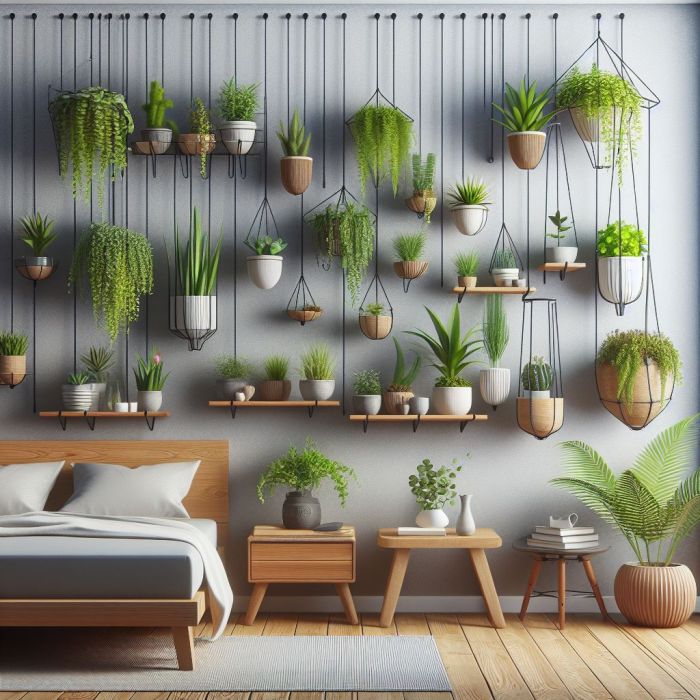
Given indoor greenhouse ideas, Hanging Gardens is a creative and space-efficient way to bring the benefits of an indoor greenhouse into your living space. Instead of traditional floor-based setups, this idea involves utilizing vertical spaces by incorporating wall-mounted shelves, hanging planters, or containers suspended from the ceiling.
Wall-mounted shelves:
Install sturdy shelves on your walls where you can place potted plants or containers filled with soil. These shelves can be arranged at different heights to create a visually appealing and functional display.
Hanging planters:
Hang planters from the ceiling with hooks or special systems. It saves floor space and lets you grow different plants.
Suspended containers:
Hang containers from the ceiling in a grid or staggered pattern, creating a dynamic and lush visual effect. This method is particularly effective for growing herbs, small vegetables, or flowers.
The benefits of incorporating Hanging Gardens as part of your indoor greenhouse ideas include:
Space Optimization:
Hanging Gardens maximize available space, making them ideal for smaller living areas or homes with limited floor space.
Aesthetic Appeal:
Beyond their practicality, hanging arrangements add a decorative and visually striking element to your home. The suspended greenery creates a unique and refreshing atmosphere.
Versatility:
This approach allows you to grow a variety of plants, from herbs to small vegetables and flowers, all within arm’s reach.
Optimal Lighting:
Consider using energy-efficient LED grow lights strategically placed to ensure that the plants receive adequate light. This is crucial for their growth and overall health, especially when natural light may be limited.
2. DIY Mini Indoor Greenhouse Cabinet:
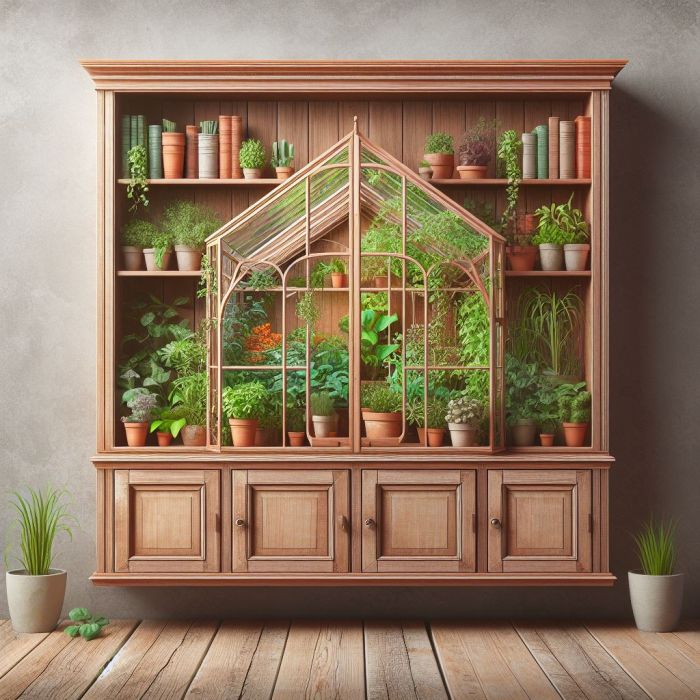
The concept of a DIY Mini Greenhouse Cabinet involves repurposing an old bookshelf or cabinet to create a space-efficient and controlled environment for indoor gardening. Here’s a detailed explanation of which is the best indoor greenhouse idea:
Repurposing Furniture:
Choose an unused bookshelf or cabinet that can be repurposed for your indoor greenhouse. This can be a practical and sustainable way to breathe new life into old furniture.
Optimizing Light Distribution:
Line the interior of the shelves with reflective material. This could be reflective tape, mylar sheets, or white paint. This step enhances the distribution of light within the cabinet, ensuring that each plant receives adequate illumination.
Creating a Greenhouse Effect:
Install transparent panels or plastic sheets on the sides of the cabinet. This creates a greenhouse effect by trapping heat and allowing sunlight to penetrate while maintaining a controlled environment for the plants.
Ideal for Small Plants and Seedlings:
This DIY solution is specifically designed for cultivating seedlings, herbs, or smaller plants. The confined space within the cabinet provides an ideal microclimate for the initial stages of plant growth.
Ventilation:
Incorporate a small fan within the cabinet to ensure proper air circulation. This is crucial for preventing the buildup of humidity and promoting healthy plant growth.
Temperature Regulation:
Implement a temperature-regulating system, such as a thermostat or heat source, to maintain an optimal temperature for your plants. This is especially important for delicate seedlings that may require specific conditions for germination.
3. The Aquaponic Greenhouse
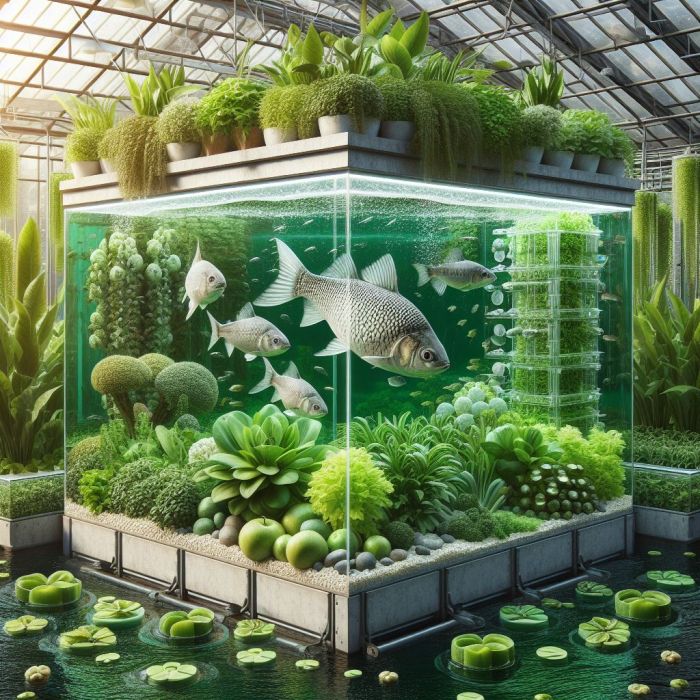
The Aquaponic Greenhouse is a fascinating and sustainable indoor greenhouse idea that combines aquaculture and hydroponics to create a symbiotic ecosystem. Here’s a detailed explanation of how it works:
Integration of Aquaculture and Hydroponics:
This involves the cultivation of fish in a controlled environment, often within a tank or aquarium. This is a method of growing plants without soil, with their roots submerged in nutrient-rich water.
Fish Tanks and Plant Beds Integration:
In an aquaponic greenhouse, fish tanks are integrated with plant beds. This arrangement forms a mutually beneficial relationship where fish waste serves as a nutrient source for plants, and the plants, in turn, purify the water for the fish.
Nutrient Cycling:
As fish excrete waste, the water becomes rich in nutrients like nitrogen. The nutrient-rich water is circulated to the plant beds where plants absorb and utilize these nutrients for their growth.
Purification:
Through this process, plants act as natural filters, purifying the water by removing excess nutrients, making it safe for the fish.
Closed-Loop Ecosystem:
The aquaponic system creates a closed-loop ecosystem, enhancing efficiency by utilizing the natural processes of nutrient cycling. It eliminates the need for external fertilizers, as the fish waste serves as a natural nutrient source for the plants.
Environmentally Friendly:
This closed-loop system is not only efficient but also sustainable. It minimizes the environmental impact associated with traditional farming practices by recycling and reusing resources within the system.
Choice of Fish and Decorative Elements:
To optimize space, choose compact fish species such as tilapia or goldfish. These species are well-suited for closed aquaponic systems.
Decorative Elements:
Enhance the aesthetic appeal of the greenhouse by incorporating decorative elements such as floating rafts. These can be used to grow herbs and greens while adding visual interest to the aquatic environment.
4. Terrarium Greenhouse:
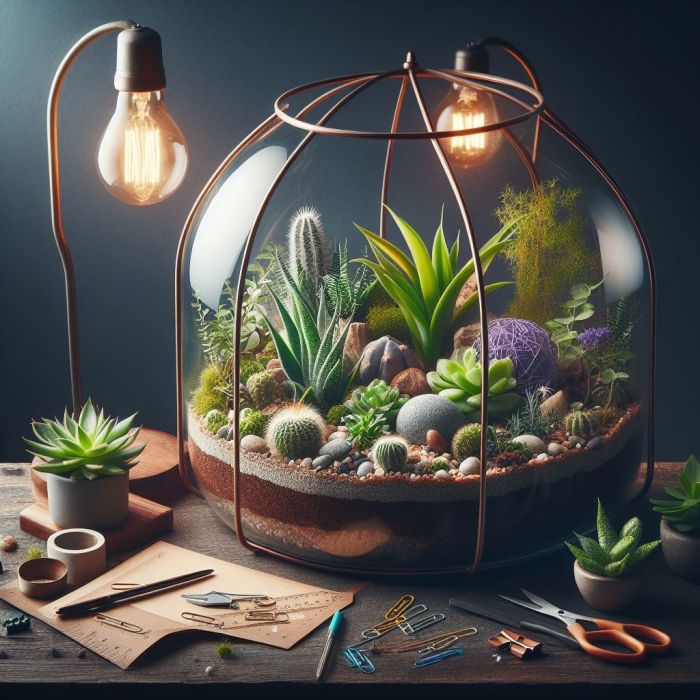
The concept of a Terrarium Greenhouse introduces an easily manageable and space-saving approach to indoor gardening, ideal for individuals with limited space or a preference for low-maintenance greenery. Here’s a detailed explanation of how to create and enjoy a Terrarium Greenhouse:
Container Selection:
Choose a transparent container, such as a jar, vase, or any glass enclosure. The transparency allows you to observe the mini-ecosystem within and adds an aesthetic touch to your living space.
Mini Ecosystem Creation: Plant Variety:
Select a variety of small plants that are well-suited for confined spaces. Consider using miniature ferns, succulents, or air plants, depending on your preference and the available light conditions.
Decorative Elements:
Enhance the visual appeal by adding stones, pebbles, or decorative elements like figurines. These elements not only add aesthetic value but also contribute to creating a harmonious mini-ecosystem.
Easy Maintenance:
Terrariums are known for their low-maintenance nature. They require minimal care and can thrive with periodic watering. The enclosed environment helps retain moisture, reducing the frequency of watering needed.
Indirect Light:
Terrariums are well-suited for spaces with indirect light, making them adaptable to various rooms in your home. They can be placed on tabletops, shelves, or windowsills, adding a touch of greenery to any environment.
Customization:
Customize the theme of your terrarium to complement your home decor. Whether you prefer a desert landscape with cacti and sand or a lush tropical paradise with vibrant greenery, the choice is yours. This personalization adds a unique touch to your indoor garden.
5. Modular Grow Wall:
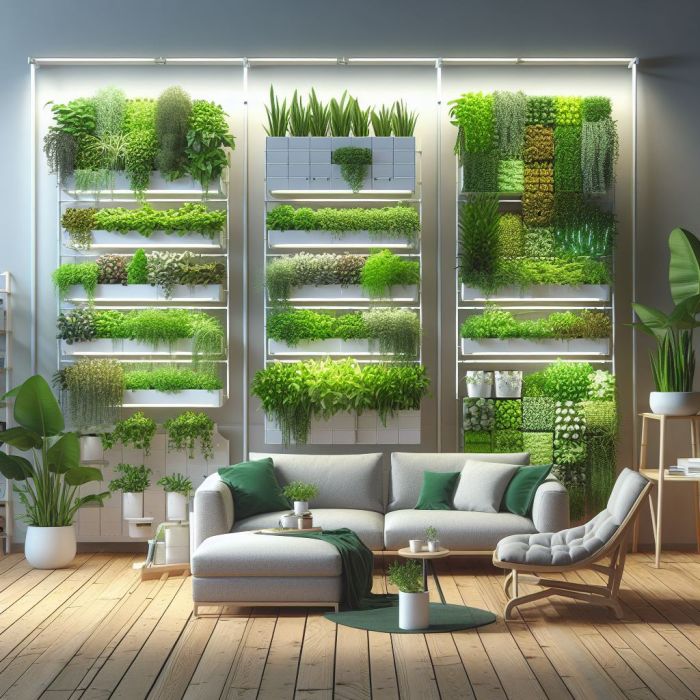
The idea of a Modular Grow Wall offers a creative and visually striking way to turn a plain wall into a flourishing vertical garden. Here’s a detailed explanation of how to implement a Modular Grow Wall system:
Blank Wall Transformation: Vertical Garden Concept:
The objective is to convert a blank wall into a captivating vertical garden using a modular grow wall system. This not only optimizes space but also adds a dynamic and green focal point to your living space.
Stackable Planters:
The core of this concept involves using stackable planters as building blocks for the vertical garden. These planters are designed to be arranged in various configurations, allowing for a customized and flexible layout.
Plant Selection for Vertical Spaces:
Choose plants that thrive in vertical environments. Ideal selections include strawberries, trailing vines, and compact herbs. These plants adapt well to the vertical orientation and contribute to the overall aesthetic of the garden.
Built-In Irrigation System: Efficient Watering:
Incorporate a built-in irrigation system within the modular grow wall. This simplifies the watering process by ensuring a consistent and efficient distribution of water to all the plants. It also reduces the need for manual watering and promotes optimal plant health.
Lighting Considerations: Natural and Artificial Light:
To ensure uniform growth across the entire wall, use a combination of natural sunlight and artificial light sources. Position the modular grow wall in a location that receives sufficient natural light, and supplement it with artificial lighting as needed. LED grow lights are an excellent choice for providing the specific light spectrum plants require for photosynthesis.
FAQs:
1. What is an indoor greenhouse?
An indoor greenhouse is a controlled environment within your home where plants can be grown year-round. It provides a space for cultivating a variety of plants, from decorative ones to herbs and vegetables.
2. Why would I want an indoor greenhouse?
Indoor greenhouses offer the ability to enjoy greenery throughout the year, purify indoor air, and cultivate fresh produce regardless of outdoor conditions. They can also serve as decorative elements, creating a calming atmosphere.
3. Do I need a large space for an indoor greenhouse?
No, many indoor greenhouse ideas are designed for limited spaces. Hanging gardens, mini greenhouse cabinets and terrariums are examples of compact solutions that maximize available space.
4. Are indoor greenhouses difficult to maintain?
The level of maintenance depends on the specific indoor greenhouse setup. Terrariums and hanging gardens are generally low-maintenance, while aquaponic and modular grow wall systems may require more attention.
In conclusion, indoor greenhouses offer a versatile and stylish way to bring the beauty of nature into your home year-round. Whether you’re looking to grow fresh produce, cultivate decorative plants, or simply enjoy the calming atmosphere they provide, there’s a greenhouse idea to suit every space and preference.
From hanging gardens and DIY mini cabinets to aquaponic setups and terrariums, these indoor gardening solutions offer practicality, aesthetic appeal, and environmental benefits. By incorporating an indoor greenhouse into your home, you can create a tranquil oasis, purify the air, and add a touch of greenery to your living space, all while embracing the joy of gardening indoors. So why not explore these easy-to-implement ideas and embark on your indoor gardening journey today?

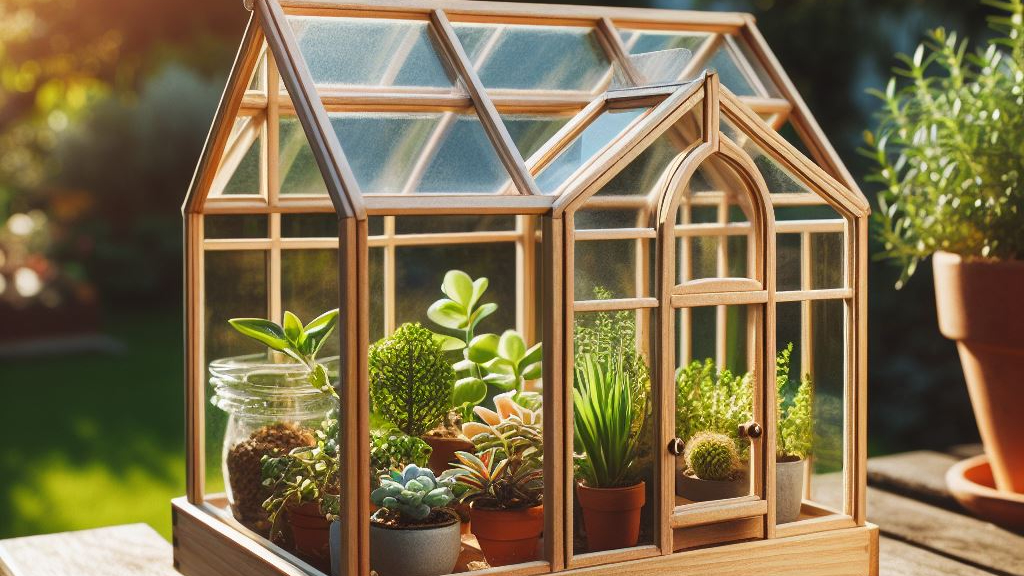
2 thoughts on “5 Simple Indoor Greenhouse Ideas: Greening Indoors with Stylish Year-Round Gardens”